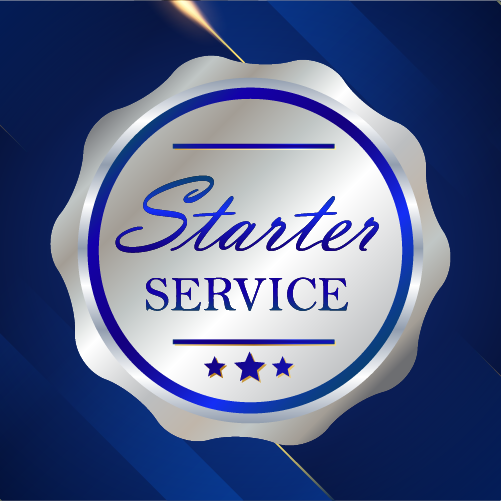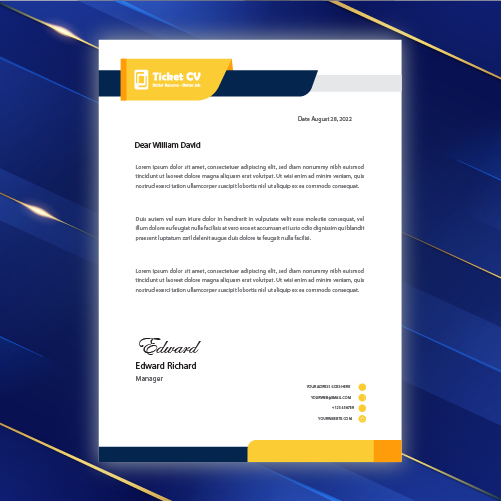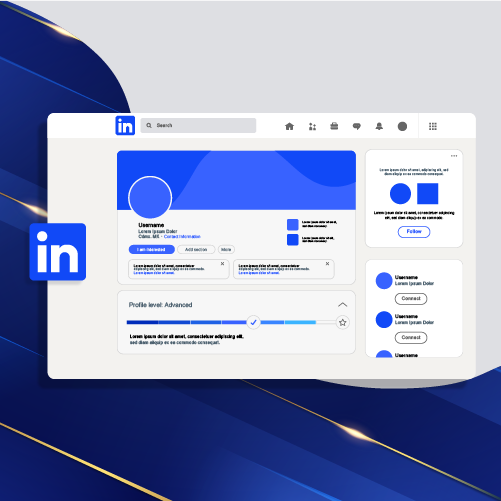Average Time to Hire 2023: Strategies for Efficient Hiring
Understanding the Average Time to Hire 2023 is crucial for companies seeking top talent. As organizations strive to enhance their recruitment process, knowing the average time to hire can provide valuable insights into refining interview strategies, optimizing training programs, and boosting team quality. We will explore how reducing time to hire can positively influence candidate experience, employee satisfaction, and ultimately contribute to a company’s reputation.
In 2023, with fierce competition for skilled individuals, grasping the dynamics of time to hire becomes even more vital. By examining research and industry trends, we aim to equip you with actionable information that aligns with your organization’s goals and fosters efficient hiring practices.

Contents
ToggleUnderstanding Time to Hire – Average Time to Hire 2023
Definition and Significance of Time to Hire
The average time to hire, also known as hiring times, refers to the duration it takes for a company to fill a vacant position. This metric holds immense significance as it directly impacts a company’s productivity, revenue generation, and overall performance. A prolonged hiring process can lead to increased workloads for existing employees and may result in missed business opportunities.
A lengthy time to hire can also negatively affect employee morale and retention rates. When positions remain unfilled for extended periods, it can create an imbalance in work distribution, leading to burnout among current staff members. Potential candidates might lose interest or accept other job offers during a protracted hiring process, causing the organization to miss out on top talent.
Factors Influencing Time to Hire
Several factors influence the time it takes for an organization to complete its hiring process. The complexity of the role being filled plays a significant role; highly specialized positions often require more extensive recruitment efforts and thorough vetting processes. Moreover, internal inefficiencies within the HR department or delays in decision-making by stakeholders can contribute to prolonged hiring times.
External factors such as market competition also impact time to hire. In industries with high demand for specific skill sets, companies may struggle with longer hiring processes due to fierce competition for qualified candidates. Furthermore, geographical location can affect time to hire; regions with limited talent pools may experience lengthier recruitment cycles compared to areas with abundant skilled professionals.
Key Metrics Used to Measure Time to Hire
Organizations utilize various key metrics when measuring their time-to-hire performance. One primary metric is “time from job posting to offer acceptance,” which tracks the duration between advertising a job opening and receiving an accepted offer from a candidate. This metric helps identify bottlenecks in the recruitment process and highlights areas requiring improvement.
Another crucial metric is “time from application submission to interview,” which evaluates how long it takes for applicants’ submissions to progress into interview stages. Analyzing this metric enables organizations to assess their initial screening processes and identify any inefficiencies that may be prolonging the hiring timeline.
“time from interview stage(s) completion(s) until offer acceptance” measures the period between concluding interviews and securing candidate acceptance of employment offers. This metric provides insights into how swiftly organizations are able to finalize employment agreements after conducting interviews.
Average Time to Hire Across Industries – Average Time to Hire 2023
Varied Average Time to Hire Across Different Industries
The average time to hire varies significantly across different industries. For instance, technology and healthcare sectors generally have shorter hiring durations due to high demand for skilled professionals and a competitive job market. On the other hand, industries like manufacturing and construction often experience longer hiring times as a result of specific skill requirements and safety regulations.
Impact of Industry-Specific Factors on Hiring Duration
Industry-specific factors play a crucial role in determining the duration of the hiring process. In industries where specialized skills are in high demand, such as information technology or engineering, the time to hire tends to be relatively shorter. This is because companies in these sectors are compelled to streamline their recruitment processes and make swift decisions in order to secure top talent before competitors do. Conversely, industries with stringent regulatory compliance or extensive training needs may experience prolonged hiring timelines due to the necessity for thorough vetting and assessment.
Examples of Industries with Shorter vs. Longer Time to Hire
In the tech industry, where there’s fierce competition for qualified candidates, organizations have adapted by expediting their recruitment procedures. They often leverage advanced technologies for candidate screening and assessment, leading to a reduced time-to-hire metric. Conversely, fields like education or government tend to have extended hiring periods owing to comprehensive background checks, rigorous interview processes, and bureaucratic protocols that must be adhered to.

Risks of Lengthy Hiring Practices – Average Time to Hire 2023
Negative Consequences of Prolonged Hiring Processes
Prolonged hiring processes can lead to negative consequences for both employers and candidates. For employers, a lengthy hiring process increases the risk of losing top talent to competitors. Candidates may become disengaged or accept other job offers while waiting for a decision, resulting in missed opportunities for the company.
Extended hiring timelines can lead to increased frustration and dissatisfaction among candidates. This can tarnish the employer’s reputation and discourage potential future applicants from considering the organization as an attractive place to work.
Impact on Candidate Experience and Employer Brand
Lengthy hiring practices have a significant impact on candidate experience and employer brand. Candidates who experience prolonged hiring processes may develop negative perceptions of the company, affecting their willingness to engage with the organization in the future.
Moreover, a poor candidate experience due to lengthy hiring practices can result in negative word-of-mouth publicity, dissuading others from applying for positions within the company. This can harm the overall employer brand and make it challenging to attract high-quality talent in the future.
Cost Implications Associated with Lengthy Hiring Practices
The cost implications of lengthy hiring practices are substantial. Extended time-to-hire directly impacts productivity as unfilled positions result in decreased output and increased workload for existing employees. Moreover, recruiting costs such as advertising, screening, interviewing, and onboarding add up over time if positions remain vacant due to prolonged hiring processes.
Furthermore, there is a risk of making bad hires when pressured by extended vacancies. Rushing through the selection process due to urgent staffing needs can lead to selecting underqualified or ill-suited candidates who may not perform well in their roles. The repercussions of bad hires include decreased team morale, reduced productivity, higher turnover rates, and additional recruitment expenses.
Impact of Big Organizations on Hiring Duration – Average Time to Hire 2023
Large companies significantly influence the average time to hire trends in the job market. Their extensive hiring processes and multiple layers of decision-making often lead to longer recruitment timelines.
How Large Companies Influence Time to Hire Trends
Big organizations impact time to hire trends due to their complex organizational structures, which involve various departments and stakeholders. The need for consensus among different levels of management can prolong the decision-making process, thereby extending the overall hiring duration.
Challenges Specific to Big Organizations in Reducing Hiring Time
One specific challenge faced by big organizations is the coordination required among different teams involved in the hiring process. Aligning schedules for interviews, assessments, and feedback from multiple individuals can be a logistical challenge, contributing to delays in making hiring decisions.
Another challenge stems from the need for thorough scrutiny and compliance with internal policies and regulations. Large companies often have stringent protocols for vetting candidates, ensuring regulatory compliance, and conducting background checks, all of which add time to the hiring process.
Strategies Employed by Big Organizations to Streamline Their Hiring Process
To streamline their hiring processes, large organizations are increasingly leveraging technology. Applicant tracking systems (ATS) help manage candidate applications efficiently, allowing recruiters to sift through a large volume of resumes more effectively.
Moreover, some big companies are adopting pre-employment assessment tools that enable them to assess candidates’ skills and cultural fit early in the process. This not only expedites decision-making but also ensures that only qualified candidates proceed further in the recruitment pipeline.
Big organizations are reevaluating their interview processes by incorporating video interviews as an alternative to traditional face-to-face meetings. This approach saves time by eliminating scheduling conflicts while still providing a comprehensive evaluation of candidates.
Furthermore, creating dedicated talent acquisition teams within large organizations has proven effective in expediting hiring processes. These specialized teams focus solely on recruiting activities, allowing them to dedicate more attention and resources toward filling positions promptly.

Strategies for Reducing Time to Hire – Average Time to Hire 2023
Effective Methods for Accelerating the Hiring Process
To expedite the hiring process, consider streamlining job descriptions to focus on essential qualifications and skills. This can attract a more targeted pool of candidates, reducing the time spent sifting through applications. Implementing pre-employment assessments or tests allows you to efficiently evaluate candidates’ competencies and suitability for the role.
Collaboration Between HR and Hiring Managers
Effective communication and collaboration between HR professionals and hiring managers are vital for expediting hiring. When both parties have a clear understanding of the position’s requirements, they can work together to establish a streamlined selection process. Regular check-ins and feedback sessions between HR and hiring managers can ensure that the recruitment process stays on track, preventing delays.
Leveraging Technology for Efficient Talent Acquisition
Utilizing applicant tracking systems (ATS) can significantly speed up the hiring process by automating various tasks such as resume screening, interview scheduling, and candidate communication. These systems help in organizing candidate data, enabling quick access to relevant information during the selection process. Moreover, leveraging video interviewing platforms reduces logistical challenges by allowing remote interviews while accelerating decision-making through easily shareable interview recordings.
Technology’s Role in Streamlining Hiring – Average Time to Hire 2023
Advancements in HR Technology for Optimizing Recruitment Timelines
HR technology has undergone significant advancements, revolutionizing the talent acquisition process. These technological innovations have empowered organizations to streamline their hiring processes, significantly reducing the average time to hire. For instance, applicant tracking systems (ATS) have enabled recruiters to efficiently manage and track candidate applications, enhancing the overall efficiency of the recruitment process.
Automation Tools and Their Impact on the Hiring Process
The integration of automation tools has been instrumental in expediting various stages of recruitment. Automation streamlines repetitive tasks such as resume screening, scheduling interviews, and sending follow-up emails. By automating these processes, recruiters can focus on higher-value activities like engaging with top-tier candidates and fostering meaningful connections. This not only accelerates the hiring timeline but also improves the overall candidate experience.
Examples of Innovative Tech Solutions Improving Time to Hire
Several innovative tech solutions have emerged as game-changers in optimizing time to hire. Video interviewing platforms allow for asynchronous interviews, enabling candidates to record their responses at their convenience. This not only eliminates scheduling conflicts but also provides hiring managers with a comprehensive view of each candidate’s communication skills and personality traits.
AI-powered assessment tools analyze candidates’ skills and cultural fit based on predefined parameters. These tools swiftly evaluate large volumes of applications, ensuring that only the most qualified candidates proceed further in the hiring process. Furthermore, collaborative hiring platforms enable seamless communication and feedback sharing among hiring teams, eliminating bottlenecks and expediting decision-making.
The Importance of Hiring Efficiency – Average Time to Hire 2023
Link Between Hiring Efficiency and Business Performance
Swift and effective talent acquisition directly impacts business performance. When companies streamline their hiring process, they can secure the best talent before competitors, enhancing their overall productivity and competitiveness. Efficient hiring ensures that the right people are in place to drive the company forward, resulting in improved performance metrics such as revenue growth, customer satisfaction, and employee retention.
Benefits of Swift and Effective Talent Acquisition
Hiring managers play a pivotal role in ensuring swift and effective talent acquisition. By promptly identifying the most suitable candidates and swiftly progressing through the recruitment stages, they contribute to reducing the average time to hire 2022. This not only minimizes disruptions within teams but also positively impacts employee morale. Employees experience less strain from prolonged vacancies, leading to sustained productivity levels.
How Hiring Efficiency Contributes to Overall Organizational Success
The efficient hiring process significantly contributes to overall organizational success by aligning employee skills with job requirements. As a result, employees are more likely to excel in their roles, leading to increased innovation and problem-solving capabilities within the organization. Moreover, swift hiring reduces costs associated with prolonged vacancies or inadequate staffing levels. Companies that optimize their hiring processes benefit from reduced expenses related to temporary staff or overtime pay.
Efficient talent acquisition also fosters a positive employer brand by showcasing an organization’s commitment to valuing both candidates’ time and existing employees’ workloads. This reputation attracts top-tier talent seeking employers who prioritize professionalism and respect throughout the recruitment process.
In essence, when companies prioritize hiring efficiency, they create a ripple effect that permeates various facets of organizational operations – from bolstering team dynamics through timely hires to fortifying financial health through minimized operational costs associated with prolonged vacancies.
Current Trends in the Job Market – Average Time to Hire 2023
Shifting Dynamics Influencing the Job Market
The job market is experiencing significant shifts in 2022, influenced by various factors such as the ongoing pandemic, technological advancements, and changing worker preferences. With remote work becoming more prevalent, job seekers now have a wider geographical scope for potential opportunities. This has led to increased competition among employers for top talent and has subsequently impacted the average time to hire metrics.
Impact of Remote Work Trends on Hiring Timelines
The rise of remote work options has revolutionized traditional hiring timelines. Employers are now navigating through a landscape where virtual interviews, onboarding processes, and collaborative tools are becoming standard practices. As a result, the time taken from posting a job opening to extending an offer has been both positively and negatively affected. While remote work offers flexibility and widens the talent pool, it also introduces complexities in evaluating candidate experience and ensuring seamless integration into company culture.
Emerging Job Market Trends Affecting Time to Hire Metrics
In this rapidly evolving job market, several emerging trends are directly influencing time to hire metrics. The gig economy’s expansion has given rise to a surge in freelance and contract workers seeking short-term opportunities rather than traditional full-time roles. Moreover, small businesses are increasingly leveraging social media platforms not only for recruitment but also for showcasing their company culture and employer brand. These trends have altered the dynamics of candidate sourcing and evaluation processes, thereby impacting the overall time required to fill open positions.
The current job market landscape is characterized by a dynamic talent climate where employers are vying for skilled individuals amidst talent shortages across various industries. As companies strive to attract top talent while adapting to remote work arrangements, it becomes evident that understanding these shifting dynamics is crucial for optimizing hiring efficiency.

Time-to-Hire Metrics and Analysis Average Time to Hire 2023
Key Metrics Used for Analyzing Time to Hire Data
When evaluating time-to-hire data, several key metrics come into play. One crucial metric is the average time to hire, which measures the average duration it takes to fill a position from the moment it’s opened until the candidate accepts the offer. Another important metric is the time spent in each stage of the recruitment process, such as sourcing, interviewing, and offer negotiation. Tracking conversion rates at each stage provides insights into where potential bottlenecks may exist in the hiring process.
Metrics such as applicant satisfaction scores and recruiter efficiency ratios also contribute to a comprehensive analysis of time-to-hire data. Applicant satisfaction scores gauge candidates’ experiences throughout the recruitment process, shedding light on areas for improvement. On the other hand, recruiter efficiency ratios measure how effectively recruiters are managing their workload by quantifying their output relative to the time invested.
Interpretation of Time-to-Hire Metrics for Decision-Making
Interpreting time-to-hire metrics is vital for making informed decisions in recruitment processes. A prolonged average time to hire may indicate inefficiencies or challenges within the hiring process that need addressing. For instance, if there’s a significant delay between interviews and offers being extended, it could signal issues with decision-making or internal coordination.
Moreover, analyzing time spent in each stage of recruitment can reveal specific pain points that hinder swift hiring. If a substantial amount of time is being allocated to sourcing without yielding suitable candidates, it may necessitate reevaluating sourcing strategies or exploring alternative talent pools.
Furthermore, understanding applicant satisfaction scores can guide decision-making by highlighting aspects of the hiring experience that require enhancement. By addressing feedback from candidates who have gone through the recruitment process, organizations can refine their approach and create a more positive candidate journey.
Benchmarking Against Industry Standards for Performance Evaluation
Benchmarking against industry standards provides valuable context for evaluating hiring performance. Comparing an organization’s average time to hire with industry benchmarks enables them to assess whether their recruitment processes are efficient or lagging behind industry norms. Similarly, evaluating conversion rates at different stages against industry averages identifies areas where improvements are needed.
Benchmarking allows organizations to gain insights into best practices employed by top performers in their industry. By studying how leading companies achieve swift hires while maintaining quality standards, organizations can adapt successful strategies into their own recruitment processes.
Conclusion
You’ve now seen the impact of lengthy hiring processes, the role of technology in streamlining recruitment, and the current trends in the job market. It’s clear that reducing time to hire is crucial for staying competitive. By implementing efficient strategies and leveraging technology, companies can significantly cut down their hiring duration, attracting top talent before their competitors do. As you navigate the ever-evolving job market, remember that swift hiring not only benefits organizations but also enhances the overall candidate experience.
So, take charge of your hiring process and embrace efficiency. Stay updated with the latest industry trends and technological advancements to streamline your recruitment efforts. By doing so, you’ll not only secure top talent swiftly but also create a positive reputation as an employer of choice in your industry.
Frequently Asked Questions
What is the average time to hire and why does it matter?
The average time to hire refers to the duration it takes for a company to fill a vacant position. It matters because lengthy hiring processes can result in losing top talent to competitors and can lead to increased costs for the organization.
How do big organizations impact hiring duration?
Big organizations often have more complex hiring processes, involving multiple decision-makers and layers of bureaucracy. This can significantly extend the time it takes to make a hiring decision, leading to longer average time-to-hire metrics.
What are some strategies for reducing time to hire?
Strategies for reducing time to hire include streamlining the recruitment process, leveraging technology for automation, improving communication between stakeholders, and implementing pre-employment assessments or tests.
What role does technology play in streamlining the hiring process?
Technology plays a crucial role in streamlining hiring by automating repetitive tasks such as resume screening and scheduling interviews. Applicant tracking systems (ATS) also help in organizing candidate data and streamlining communication with applicants.
How do current trends in the job market impact time-to-hire metrics?
Current trends such as high demand for specific skill sets or remote work arrangements can impact time-to-hire metrics by either accelerating or prolonging the recruitment process based on the availability of qualified candidates and changing work dynamics.












